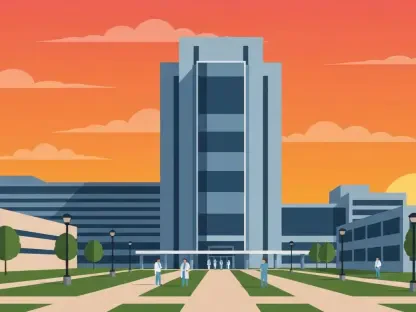Sustainability is a term that has gained currency over recent decades, yet many industries, including engineering, still grapple with integrating this principle into their core practices. This challenge often stems from misconceptions about sustainability’s feasibility and cost. Despite being labeled as expensive and idealistic by some detractors, sustainability is not a mere green fashion trend but rather an imperative course of action deeply interwoven with engineering. Unpacking these misconceptions and exploring how sustainable practices are not only viable but also advantageous for the engineering sector is becoming increasingly crucial. A redefined focus on sustainability involves a holistic understanding that encompasses economic, environmental, and social dimensions. As the notion of sustainability continues to evolve, the engineering sector must adapt, utilizing innovative practices and technologies that pave the way for responsible and efficient design solutions. By embracing a sustainability mindset, engineers can anticipate future societal needs while meeting current ones efficiently.
Embracing a Holistic Sustainability Perspective
At its foundation, engineering involves crafting solutions that last. This principle naturally aligns with sustainability, particularly when engineers incorporate a holistic outlook that accounts for a project’s lifecycle beyond just its initial costs. A broader comprehension involves recognizing the three pillars of sustainability: social, environmental, and economic. While social sustainability ensures that engineering projects promote social equity and community well-being, environmental sustainability focuses on utilizing resources judiciously and preserving ecosystems. Economic sustainability, on the other hand, calls for creating economically viable systems that simultaneously uphold social and environmental goals. By fostering a comprehensive view, engineers can craft solutions that not only withstand time but align with evolving societal standards. Building roads that accommodate cycling and pedestrian lanes reveals sustainability’s seamless integration into engineering. These features ensure ecological advantages by promoting zero-emission travel, while also fostering economic and social benefits by widening transportation options for individuals without access to vehicles or transit systems.
Moreover, embedding sustainability in engineering requires acknowledging existing practices that inherently embody these principles. Many standard procedures, such as balancing earthwork on construction sites, help reduce costs and emissions by decreasing material disposal requirements and utilizing on-site resources effectively. This embodies the principle of circularity, pivotal in sustainable development, showing how existing practices align with sustainability goals. Enhancing such practices by, for example, treating and using contaminated materials on-site instead of disposal, reinforces the circular approach’s value. These initiatives exemplify circularity’s ambition to ensure that every part of the process contributes to sustainability. Moreover, an enhanced understanding of resilience within engineering design is indispensable. Anticipating future demands due to alterations in climate, infrastructure, and societal dynamics fortifies structures against potential strains. A resilient design approach, focusing on redundancy, resourcefulness, responsiveness, and rapid recovery, ensures that structures can withstand and recover swiftly from unforeseen stress, ultimately strengthening community resilience and sustainability.
Harnessing Innovation Through Education and Technology
The road to embedding sustainability in engineering is also paved through education and technological advancements. Engineers are increasingly exploring innovative technologies and methodologies that contribute to sustainability’s core goals. Staying informed about cutting-edge developments—ranging from artificial intelligence enhancing systems resilience to breakthroughs in sustainable material treatments—can drastically improve project outcomes. Continuous professional development is vital. Engineers equipped with up-to-date knowledge are better positioned to implement creative solutions that enhance sustainability. Understanding local businesses that specialize in the sustainable handling of materials or tapping into AI capabilities for optimizing resource allocation exemplifies how education intersects with technological possibility. By not only following current developments but actively engaging with them, engineering professionals can redefine project frameworks to prioritize sustainability.
The drive for sustainability emphasizes reshaping existing narratives concerning its value proposition. Innovations within sustainable materials and processes highlight how cost barriers traditionally associated with sustainability are diminishing. For example, the difference in cost between low-carbon and traditional concrete is narrowing as technological innovations advance. Similarly, utilizing reclaimed materials, such as asphalt, is becoming more financially advantageous against new materials due to growing scarcity and high transport costs. Disseminating these positive narratives can spark a shift in perception, showing how sustainability integrates efficiently into engineering without incurring excessive costs. By illustrating the tangible benefits of sustainable solutions, these stories can address skepticism and foster broader acceptance across the industry. Engineers hold a pivotal position in this transformation, leading the way in sustainable practices and influencing client and industry standards.
Leading the Charge Toward Sustainable Engineering Solutions
Sustainability, a term gaining traction over the past few decades, remains a challenging concept to integrate into the core practices of many industries, including engineering. This difficulty mainly arises from misconceptions about sustainability’s feasibility and cost. Critics often dismiss it as expensive or merely an idealistic “green” trend. However, sustainability is not just a transient wave but an essential path intricately linked with engineering. Debunking these myths and highlighting the benefits of sustainable practices in engineering are increasingly vital. A new focus on sustainability requires a comprehensive approach that includes economic, environmental, and social aspects. As the concept of sustainability evolves, the engineering sector must adapt by employing innovative practices and technologies. These advancements lead to responsible and efficient design solutions. By adopting a sustainability mindset, engineers can effectively address future societal needs and meet current demands without compromising resources.









